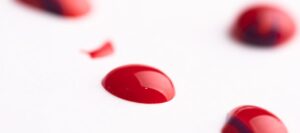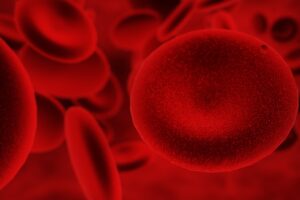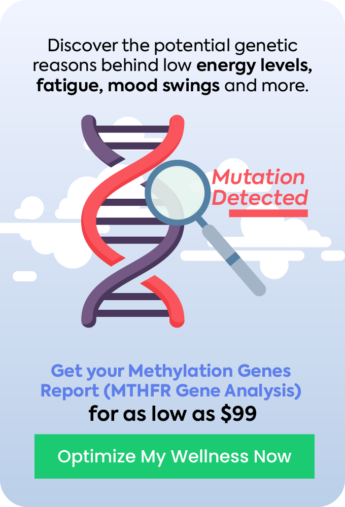Disclaimer: This article is for informational purposes only and is not intended to diagnose any conditions. LifeDNA does not provide diagnostic services for any conditions mentioned in this or any other article.
Red Blood Cell Distribution Width (RDW) is a simple yet powerful metric that provides insight into the variation in the size of your red blood cells. It may seem like just another number on a blood test, but it plays a key role in diagnosing and monitoring various health conditions, from anemia to heart disease. But what determines your RDW? Understanding how RDW and genetics are connected can offer a deeper look into your blood health and what it means for your overall well-being.
What is Red Blood Cell Distribution Width?
Red Blood Cell Distribution Width is a measurement used in blood tests to assess the variation in the size of red blood cells (RBCs). Red blood cells are responsible for carrying oxygen throughout the body, and their size can reveal important information about a person’s health. RDW specifically looks at the difference between the smallest and largest red blood cells in a sample, expressed as a percentage.
A normal RDW indicates that red blood cells are relatively uniform in size, while a higher RDW suggests more variation. This can be an early indicator of conditions such as anemia, nutrient deficiencies (like those of iron, folate, or vitamin B12), or chronic diseases, including certain cardiovascular issues.
Recent research also shows that genetics can play a role in determining RDW levels. Specific genetic variants have been linked to how red blood cells are produced, their size, and how they develop over time. Understanding one’s genetic predisposition to altered RDW can provide insight into long-term blood health and how lifestyle factors, such as diet or exercise, might interact with these genetic influences. This makes RDW not only a key marker for health conditions but also a window into how genetics shape blood health over time.
How is Red Blood Cell Distribution Width Measured?
RDW is measured as part of a complete blood count (CBC), a routine test that evaluates overall blood health. During a CBC, a blood sample is taken and analyzed to assess the size and volume of RBCs. RDW specifically calculates the variation in red blood cell sizes, which is expressed as a percentage. This percentage reflects how much the size of red blood cells deviates from the average cell size.
Genetic factors can influence RDW by affecting red blood cell production and maturation. Certain inherited traits or mutations may predispose someone to more variable red blood cell sizes, making RDW an important tool for understanding not only current health but also how genetic predispositions might influence blood health and overall well-being.
Normal Red Blood Cell Distribution Width Ranges and What They Indicate
Normal RDW typically ranges between 11.5% and 14.5%. This percentage represents the variation in size between red blood cells (RBCs). When RDW falls within this normal range, it indicates that the red blood cells are relatively uniform in size, suggesting consistent production and development of RBCs in the body.
This uniformity is a good sign, as it suggests that the body is efficiently producing healthy red blood cells that can carry oxygen throughout the body without any significant issues. When the RDW range is elevated, meaning the percentage is higher than 14.5%, it indicates greater variation in red blood cell size.
Genetics can influence RDW by affecting the production and maturation of red blood cells. Some individuals may have genetic variants that predispose them to fluctuations in RDW, making them more susceptible to certain conditions. Understanding these genetic influences, alongside lifestyle factors like diet and exercise, can help individuals take proactive steps to manage their overall blood health and well-being.
How to Test for Red Blood Cell Distribution Width
Testing for RDW is done through a Complete Blood Count (CBC), a routine test that evaluates various components of blood, including red blood cells (RBCs). To measure RDW, a small blood sample is taken, typically from a vein in the arm. The sample is then analyzed in a laboratory to determine the size and distribution of red blood cells.
During the test, RDW is calculated as a percentage, indicating the degree of variation in RBC sizes. This measurement provides valuable insights into whether red blood cells are uniform in size or if there is significant variability, which can signal potential health issues. Regular testing is especially useful for people with genetic predispositions to blood disorders, as certain genetic variations can affect RDW by influencing red blood cell production and maturation.
For individuals interested in how genetics impact their daily lives, testing RDW offers a window into their blood health. Coupled with genetic insights, it can guide personalized lifestyle changes to improve overall well-being.
What Other Factors Can Influence Red Blood Cell Distribution Width?
In addition to genetics, several other factors can influence RDW. RDW measures the variability in the size of red blood cells, and an elevated RDW can indicate underlying health issues. Here are the key factors that can affect RDW:
Nutrient Deficiencies
Deficiencies in essential nutrients, particularly iron, folate, and vitamin B12, can cause increased RDW. These nutrients are vital for the proper production and maturation of red blood cells. When the body lacks these nutrients, it produces red blood cells of varying sizes, resulting in a higher RDW. For example, iron deficiency anemia often shows an elevated RDW as the body produces smaller and less efficient RBCs.
Chronic Inflammation
Inflammatory conditions can impact RDW by disrupting the body’s ability to produce red blood cells. Chronic inflammation, common in conditions like rheumatoid arthritis or inflammatory bowel disease, leads to impaired RBC production. This results in a higher RDW, signaling that the body is struggling to maintain uniformity in RBC size.
Age
RDW tends to increase with age as the efficiency of red blood cell production naturally declines. Studies have shown that older individuals often have higher RDW, possibly due to age-related changes in bone marrow function, which leads to more variability in RBC size.
Liver and Kidney Diseases
Diseases affecting the liver or kidneys can also influence RDW. The liver plays a crucial role in storing essential nutrients and detoxifying the body, while the kidneys regulate the production of erythropoietin, a hormone that stimulates RBC production. Impaired liver or kidney function can disrupt red blood cell production, leading to increased variation in cell size and higher RDW.
Alcohol Consumption
Excessive alcohol intake is known to affect the size of red blood cells and can lead to increased RDW. Alcohol impacts bone marrow function, reducing the body’s ability to produce healthy, uniform RBCs, which causes more variation in cell size.
Medications
Certain medications, including chemotherapy drugs and antiretroviral therapies, can influence RDW by affecting how the bone marrow produces red blood cells. These treatments often cause bone marrow suppression, leading to irregularities in red blood cell size and an elevated RDW.
Understanding how these factors interact with one’s genetic predispositions can help individuals take proactive steps to manage their blood health. For example, those with genetic variants that already affect RDW may need to pay closer attention to nutrient intake, inflammation management, or limiting alcohol consumption to maintain healthy red blood cell function.
Are High or Low Red Blood Cell Distribution Width Ranges Dangerous?
A high or low RDW range can serve as an indicator of potential health issues, but it is not inherently dangerous by itself. RDW measures the variation in RBC sizes, with normal values typically ranging from 11.5% to 14.5%. However, significant deviations in RDW can signal underlying conditions.
A high RDW value (above 14.5%) often indicates that the body is producing red blood cells of varying sizes. This could be a sign of anemia, especially if due to nutrient deficiencies such as those of iron, folate, or vitamin B12. High RDW has also been associated with chronic inflammation, cardiovascular disease, and even certain types of cancer. In these cases, elevated RDW reflects the body’s struggle to maintain a stable supply of healthy red blood cells, which can compromise oxygen transport.
Low RDW value, though less common, suggests that the red blood cells are very uniform in size. This isn’t typically a cause for concern, but very low levels could indicate a lack of bone marrow activity, such as in bone marrow disorders, where red blood cell production is suppressed.
What are the Symptoms of Abnormal Red Blood Cell Distribution Width?
An abnormal RDW range often indicates that the body is producing RBCs of varying sizes, which can lead to a range of symptoms depending on the underlying cause. While RDW itself doesn’t cause symptoms, the abnormal range can be linked to specific conditions that present with noticeable signs. Here are some common symptoms associated with abnormal RDW:
- Fatigue: Fatigue is one of the most common symptoms linked to high RDW, especially in cases of anemia. When red blood cells vary in size, they may not transport oxygen as efficiently, leading to feelings of tiredness and low energy levels.
- Shortness of Breath: When the body struggles to supply oxygen effectively due to abnormal RDW, it may lead to shortness of breath. This symptom is often more pronounced during physical activity, as the demand for oxygen increases.
- Pale or Jaundiced Skin: Changes in skin color can occur if abnormal RDW is linked to nutrient deficiencies or liver conditions. Pale skin may suggest iron deficiency anemia, while jaundice could be a sign of liver-related issues affecting red blood cell health.
- Dizziness or Lightheadedness: A high RDW value can indicate anemia or nutrient deficiencies, which may cause dizziness or lightheadedness, particularly when standing up or exerting oneself.
- Heart Palpitations: Abnormal RDW may be associated with cardiovascular conditions, leading to symptoms like heart palpitations or an irregular heartbeat. This occurs when the heart works harder to circulate oxygen-depleted blood.
- Cold Hands and Feet: Poor circulation due to inefficient red blood cells can lead to cold extremities, a symptom commonly seen in individuals with high RDW and anemia.
These symptoms highlight the importance of monitoring RDW values, especially for those with genetic predispositions to blood health issues. Recognizing these signs early can help guide lifestyle or medical interventions.
Lifestyle Modifications to Manage Red Blood Cell Distribution Width
Managing RDW through lifestyle modifications is an effective approach, especially for individuals who may have genetic predispositions influencing their blood health. Here are some evidence-based lifestyle changes that can help normalizing RDW:
Balanced Nutrition
Proper nutrition is critical for maintaining healthy RDW. Deficiencies in iron, vitamin B12, and folate are common causes of high RDW. Including iron-rich foods like lean meats, spinach, and legumes in the diet can help prevent iron deficiency anemia. Vitamin B12, found in fish, dairy, and fortified cereals, and folate, present in leafy greens, beans, and citrus fruits, are essential for proper red blood cell production. A well-rounded diet ensures that the body has the nutrients it needs to produce red blood cells of uniform size, lowering the risk of RDW abnormalities.
Hydration
Staying adequately hydrated supports red blood cell production and function. Dehydration can cause red blood cells to shrink, leading to an increase in RDW. Drinking sufficient water throughout the day helps maintain blood volume and RBC health, ensuring that the cells remain at a consistent size.
Exercise
Regular physical activity has a positive effect on red blood cell production and oxygen transport. Aerobic exercises, such as walking, running, or swimming, stimulate the body to produce more red blood cells, which can improve RDW levels by promoting healthy RBC production. However, overexertion or extreme endurance exercise may have the opposite effect, so it’s important to maintain a balanced and moderate exercise routine.
Inflammation Management
Chronic inflammation has been linked to elevated RDW levels, as it impairs red blood cell production. Managing inflammation through lifestyle choices can help. Anti-inflammatory diets, which include omega-3-rich foods like fatty fish, nuts, and seeds, can help reduce inflammation. Additionally, limiting processed foods and sugary items can prevent inflammation and promote healthier RDW.
Limiting Alcohol Consumption
Excessive alcohol intake can interfere with the production of red blood cells and lead to higher RDW. Alcohol affects bone marrow function and can cause red blood cell size to vary significantly. Reducing alcohol consumption or avoiding it altogether supports more consistent red blood cell production.
Stress Reduction
Chronic stress can affect the body’s ability to produce healthy red blood cells. Managing stress through techniques such as mindfulness, yoga, or meditation may support healthy RDW by promoting overall well-being and reducing the impact of stress on red blood cell production.
Regular Health Monitoring
For individuals with genetic predispositions that influence RDW, regular blood tests are key. Monitoring RDW values as part of routine health check-ups allows individuals to track changes over time. If abnormalities are detected, early interventions, such as adjusting diet or addressing nutrient deficiencies, can be made to prevent further complications.
By combining these lifestyle modifications, individuals can take proactive steps to manage their RDW, ensuring that their red blood cells remain healthy and that their overall blood health is supported. Understanding one’s genetic predispositions can guide more personalized approaches to these changes, optimizing blood health for long-term wellness.
Summary
- Red Blood Cell Distribution Width (RDW) measures the variation in the size of red blood cells (RBCs).
- RDW is key in diagnosing conditions like anemia and heart disease, offering insight into overall blood health.
- RDW is influenced by genetics, with certain variants affecting red blood cell production and size.
- Normal RDW ranges from 11.5% to 14.5%, indicating uniform red blood cell size. Elevated RDW can indicate health issues like nutrient deficiencies (of iron, B12, folate) or chronic disease.
- RDW is measured during a Complete Blood Count (CBC), providing insight into blood cell size variation.
- Factors like age, chronic inflammation, liver/kidney disease, and excessive alcohol consumption can affect RDW.
- High RDW values indicate variation in RBC size, signaling potential issues like anemia or cardiovascular disease.
- Low RDW suggests uniform RBC size, though a very low range might indicate bone marrow suppression.
- Symptoms of abnormal RDW include fatigue, shortness of breath, dizziness, pale or jaundiced skin, heart palpitations, and cold hands and feet.
- Managing RDW involves balanced nutrition, hydration, regular exercise, reducing alcohol intake, inflammation management, stress reduction, and regular health monitoring.
References
- https://www.ncbi.nlm.nih.gov/pmc/articles/PMC5291765/#:~:text=Red%20cell%20distribution%20width%20(RDW,%25%20to%2014.5%25)(1).
- https://my.clevelandclinic.org/health/body/21691-function-of-red-blood-cells
- https://www.healthline.com/health/rdw-blood-test
- https://www.ncbi.nlm.nih.gov/pmc/articles/PMC4261384/#:~:text=Healthy%20subjects%20and%20RDW&text=%5B8%5D%20concluded%20that%20elevated%20RDW,all%2Dcause%20and%20cardiovascular%20mortality.
- https://www.ncbi.nlm.nih.gov/pmc/articles/PMC5619771/
- https://www.who.int/health-topics/cardiovascular-diseases#tab=tab_1
- https://www.mountsinai.org/health-library/diseases-conditions/jaundice










